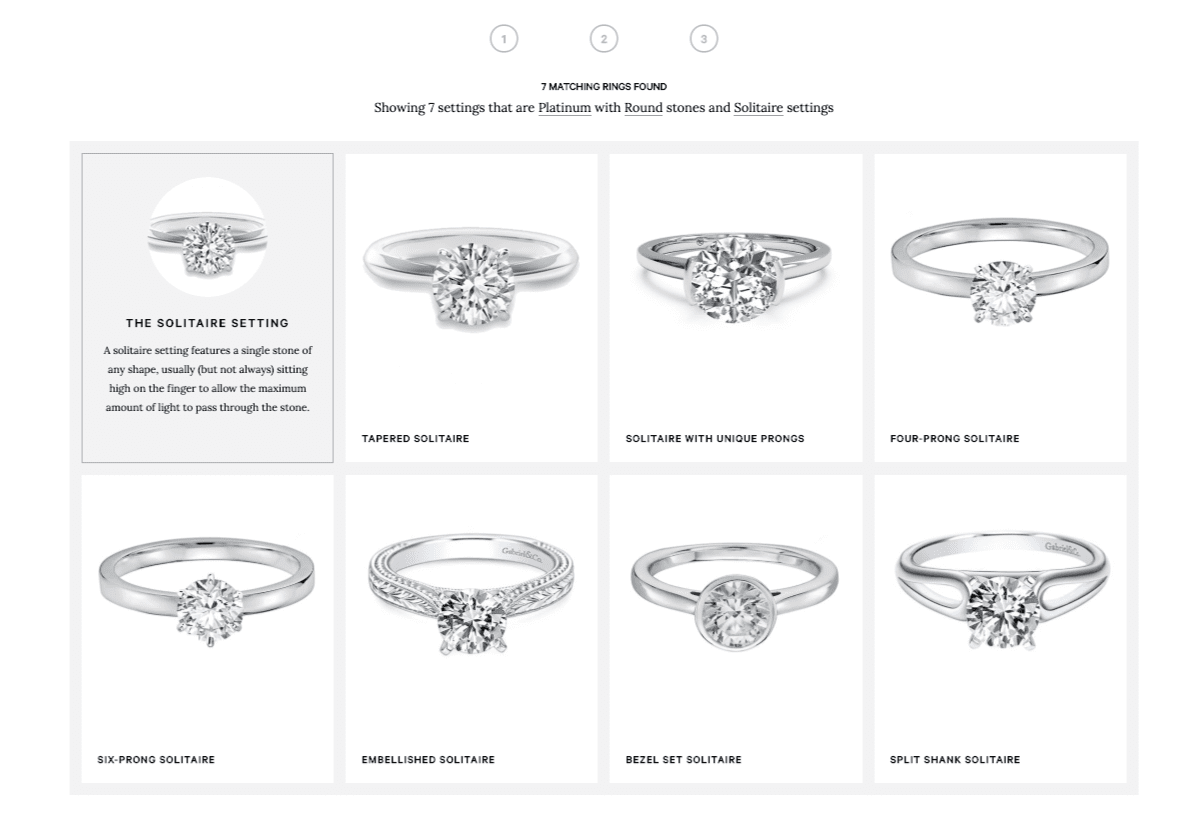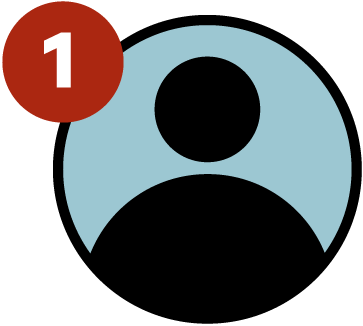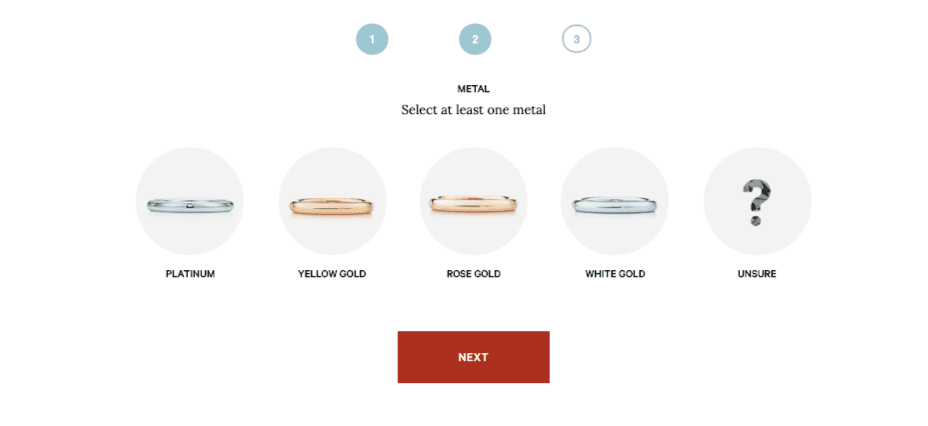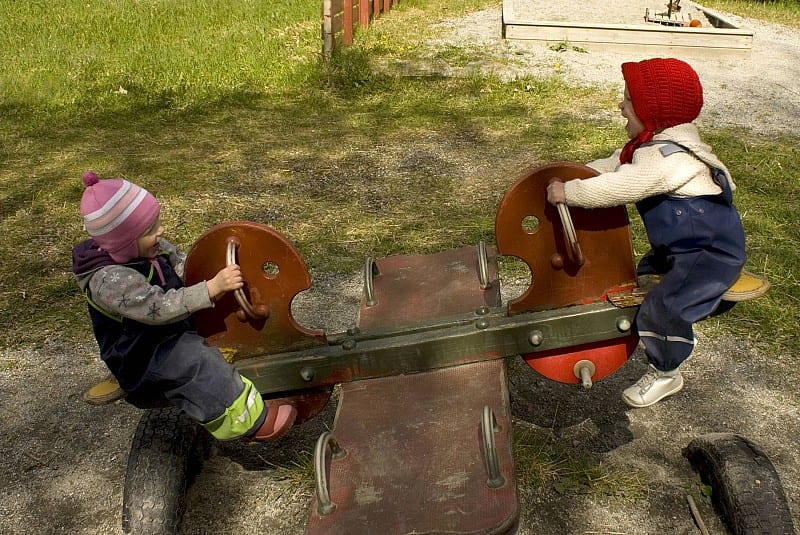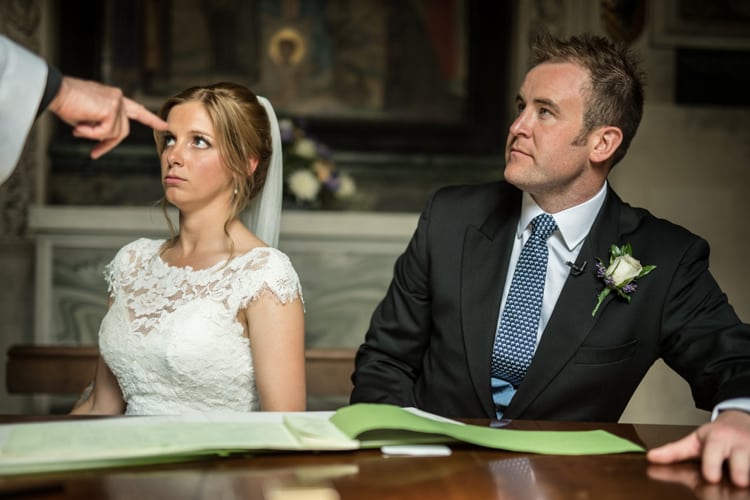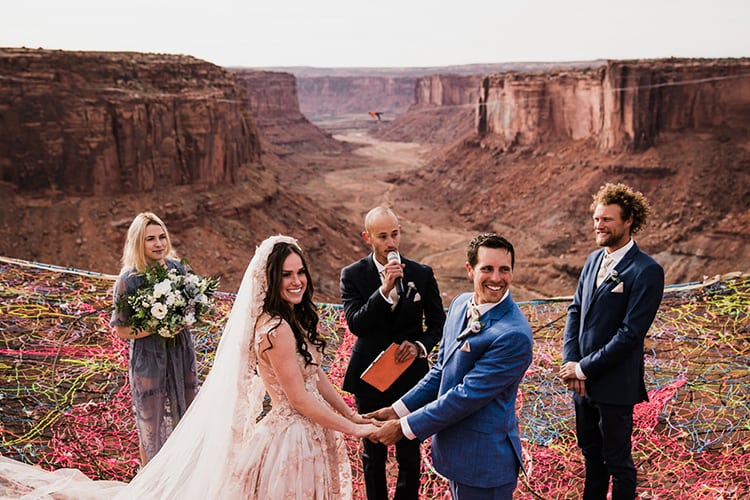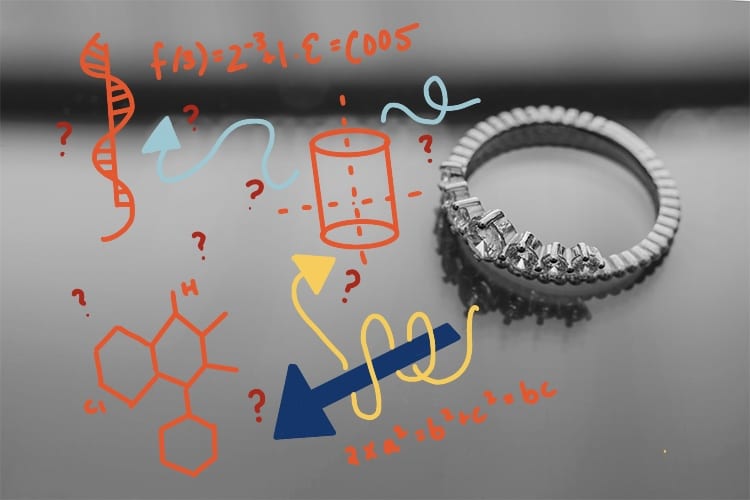
There’s an old song that goes “It ain’t what you do, it’s the way that you do it.” We think a similar principle applies to engagement rings. As in: “It ain’t the rock you buy, it’s the way that you show it.”
Of course, the rock you buy is important–it’s extremely important–but if you don’t spend enough time thinking about the setting, you will squander the opportunity of maximizing the bling effect of the stone. A setting is defined by the OED as “a piece of metal in which a precious stone or gem is fixed to form a piece of jewelry.”
Mounting a brilliant diamond in a crappy setting is like buying a Rembrandt and displaying it in a frame from Ikea.
We know, we know: You just spent all your time learning about diamonds, and now you have to learn even more terms?
Don’t worry. We made this tool for people just like you; it’s an easy-to-use resource for putting together the exact right setting for the stone you bought (or plan on buying). Actually, it’s a good idea to pick out your setting at the same time you find your diamond, as the two decisions will influence each other.
How Do Ring Settings Work?
Picture an engagement ring. Then picture it with no diamond. That’s the setting: it’s the frame in which the diamond sits, the part of the ring that attaches it to the band.
Settings come in many different forms, can include extra accent diamonds and things like metal filigrees (defined as “ornamental work of fine, typically gold or silver, wire formed into delicate tracery”). The setting is there to make the diamond, and the ring as a whole, look pretty (and often bigger or brighter).
How Do You Pick the Right Setting?
Well, one way is to do a bunch of research and then compare prices on several different online retailers or at a selection of brick-and-mortar dealers.
Or…you could use The Plunge’s Setting Finder tool, which helps steer you through the various types of settings and then gives you a curated selection of rings to consider. She’ll be happy, which will make you happy, which makes us happy.
Using The Plunge’s Setting Finder Tool
Step 1: Launch the Tool
Click on the link or go to our Toolbox page and scroll down to the Setting Finder (second row, right-hand side):
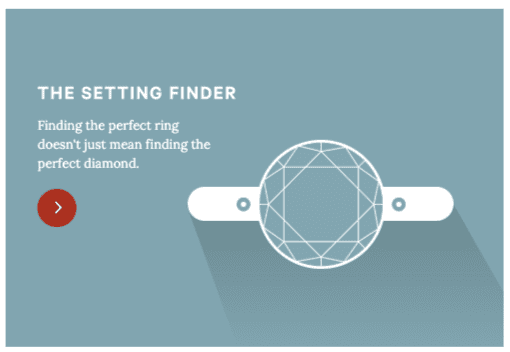
Step 2: Pick a Style, Any Style
When you click into the setting tool, the first thing you’ll need to do is select a setting style.
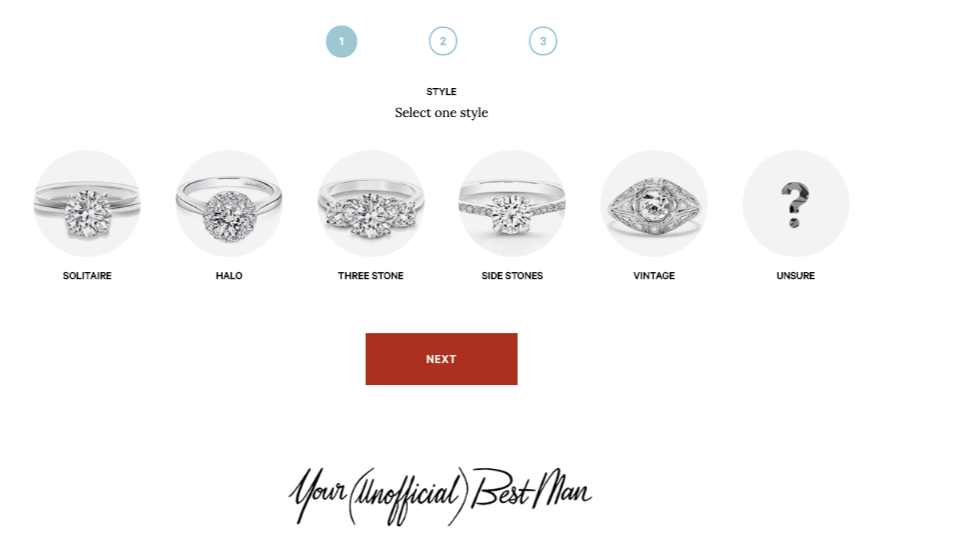
You can see what they look like on the page, but here’s a quick breakdown of the basics:
- Solitaire: a single stone mounted on a band (see multiple examples)
- Halo: a single stone mounted on a band, with a ring of smaller stones surrounding it. (See multiple examples)
- Three Stone: a large center stone, with a slightly smaller stone on each side. (See multiple examples)
- Side Stones: a large center stone is accented with smaller stones set into or on the ring’s band (also known as its “shank.” (See multiple examples)
- Vintage: the wild card–everything from Georgian designs to Art Deco. (See multiple examples)
Which style should you pick? Well, that gets into the question of what kind of ring she wants. We can’t tell you that, but we can give you advice on how to figure it out. Note that a setting like the halo can make a small diamond look bigger.
Step 3: Select a Metal
Choose a metal for the ring. There are a lot of different factors to consider when choosing the metal, but perhaps the most important at this stage is color. Briefly put, your options are:
- Platinum (this tends to be most expensive)
- Yellow Gold
- Rose Gold
- White Gold
Step 4: Choose a Stone Shape
Select the shape of the diamond you’re considering, which could be round, oval, pear, heart and variations on square and rectangular. (Statistically speaking, it’s probably a Round–by far the most popular engagement ring shape). Each has its own charm and advantages, so make sure you choose the one closest to her heart.
Something to remember: “shape” is not the same thing as “cut.” The “cut” refers to the way the diamond has been fashioned–literally cut–from the rough chunk of carbon dug out of the earth. The cut determines things like the proportions and symmetry of the stone, how much it sparkles, and, ultimately, how much it costs.
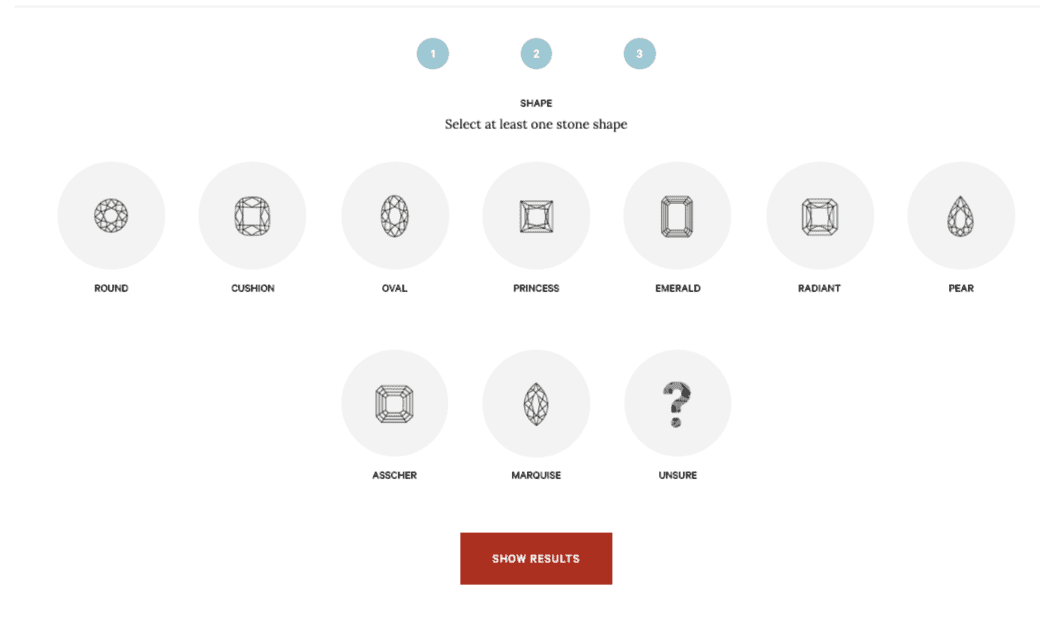
Step 5: And the Winners Are…
Once you’ve chosen your criteria (which you can change any time), the Plunge’s unique algorithm will show you a carefully curated selection of rings, along with explanations of the details of each.
